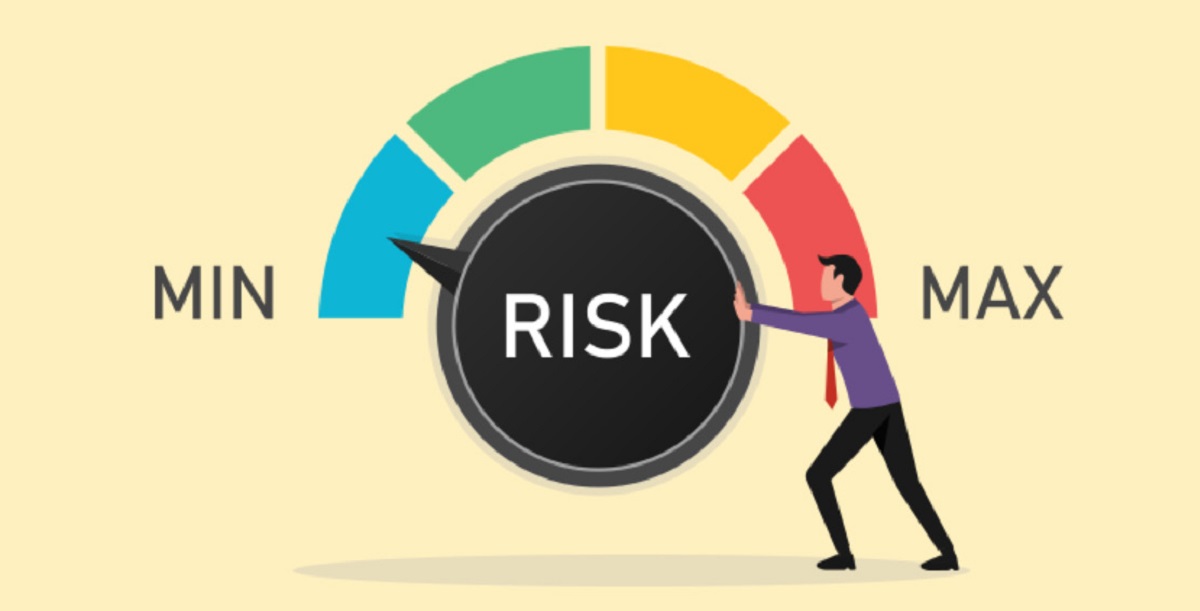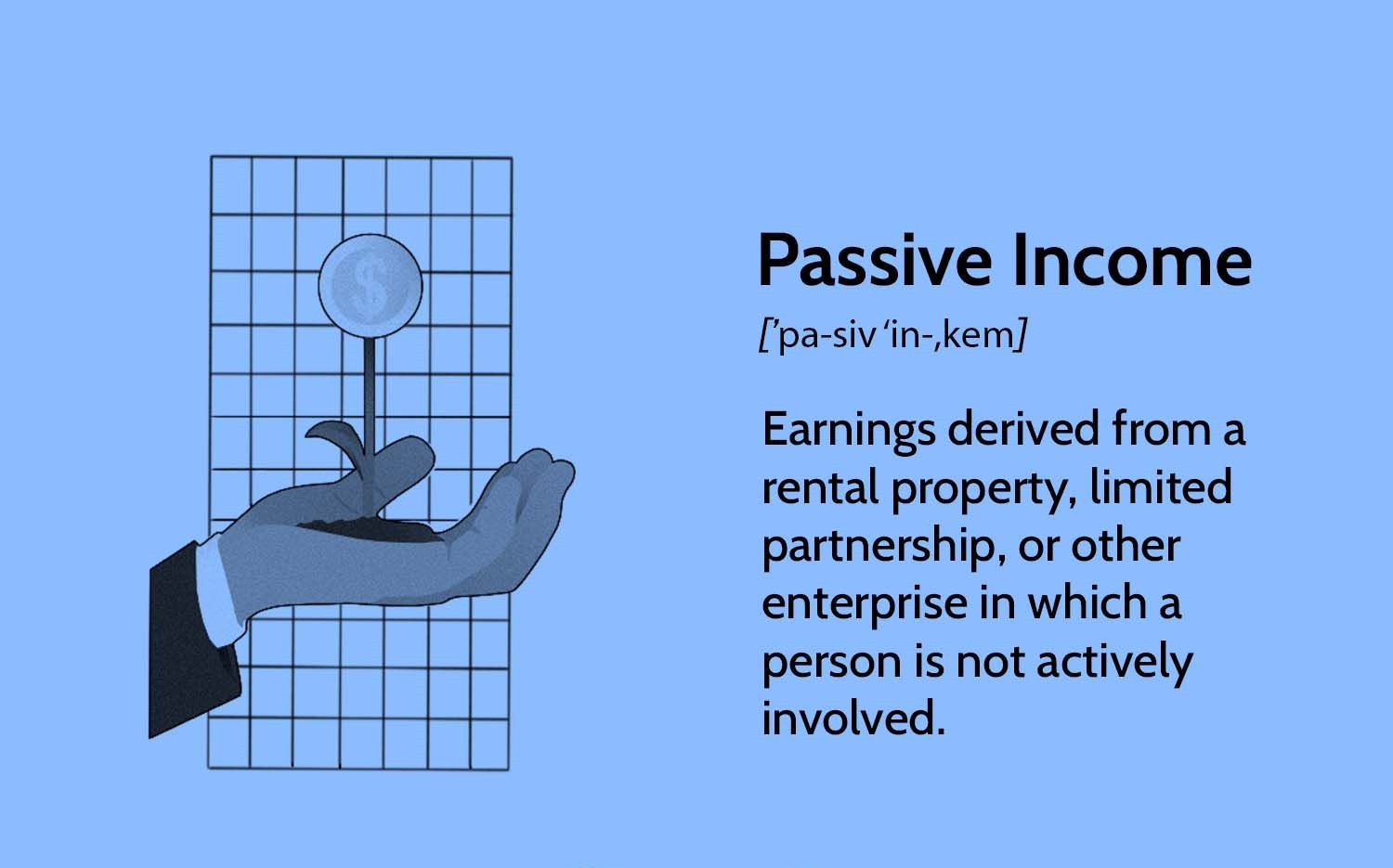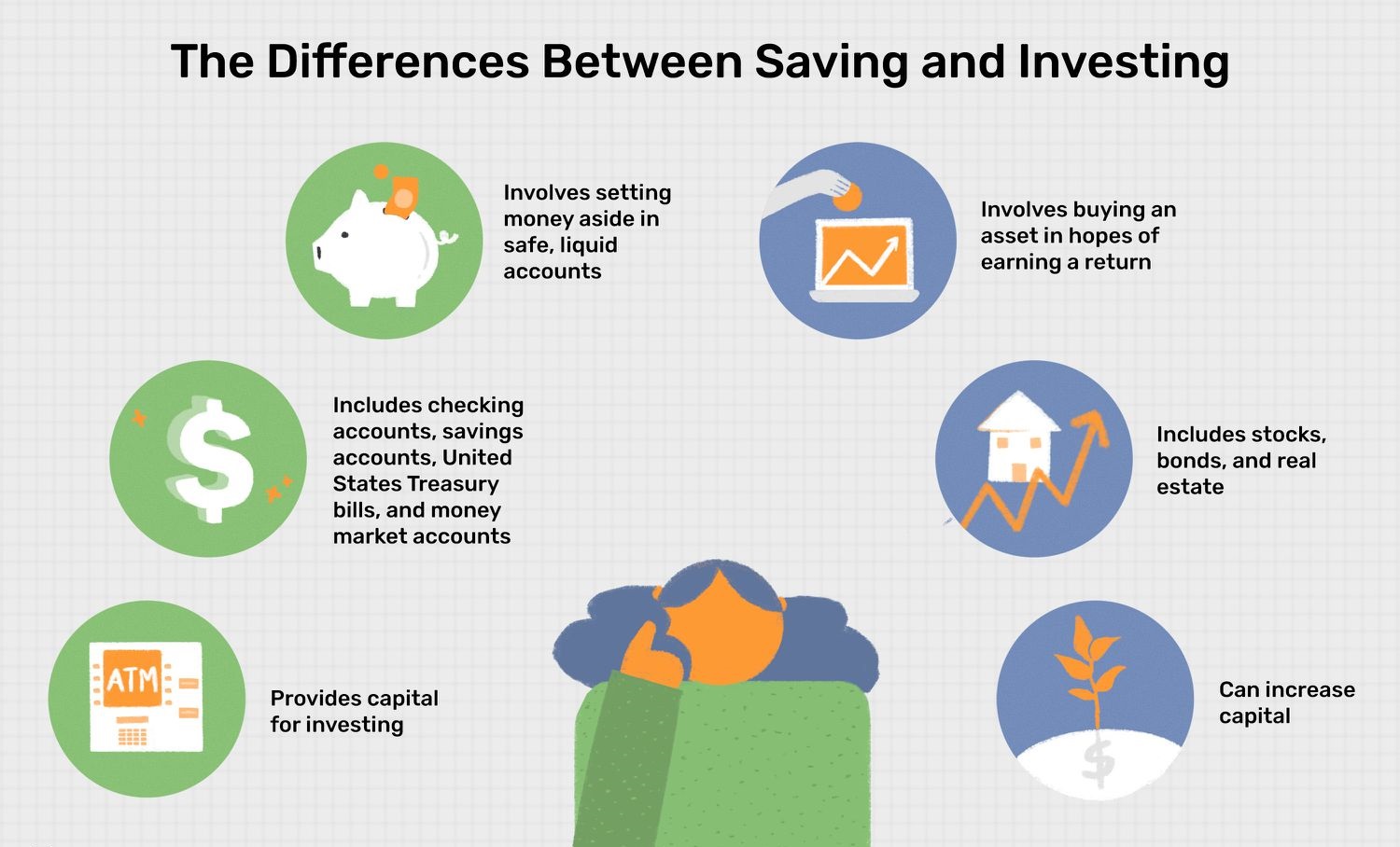Diversify Your Portfolio
Diversification is a key strategy to minimize the risk from your investments. It involves spreading your investment across different asset classes, industries, and geographic regions. By diversifying your portfolio, you reduce the impact of any individual investment’s performance on your overall portfolio. Here’s why diversification is important:
1. Spreading Risk: Investing in a variety of assets helps reduce the potential impact of a single investment’s poor performance. Different asset classes, such as stocks, bonds, real estate, and commodities, respond differently to market conditions, so a downturn in one area may be offset by gains in another.
2. Capitalizing on Opportunities: Diversification allows you to take advantage of opportunities in different sectors or regions. By investing in a range of industries and geographic areas, you can benefit from market upswings in specific sectors while mitigating potential losses in others.
3. Smoothing Returns: The performance of different asset classes often varies over time. By diversifying, you can smooth out the volatility of your portfolio’s returns. For example, when stocks decline, bonds may perform better, thereby moderating the overall impact on your investment portfolio.
4. Balancing Risk and Return: Diversification helps you strike a balance between risk and return. Some asset classes may have higher potential returns but also carry higher risks. By diversifying, you can align your investments to your risk tolerance and financial goals.
5. Achieving Long-Term Goals: Diversification is crucial for long-term investing. Over time, the performance of different asset classes varies, so diversifying your portfolio helps ensure you have exposure to growth opportunities while managing risk. This is especially important if you have a long investment horizon.
One way to diversify your portfolio is by investing in a mix of stocks, bonds, mutual funds, and other investment vehicles. Additionally, consider spreading your investments across different industries or sectors, such as technology, healthcare, finance, and energy.
Keep in mind that diversification does not guarantee profits or protect against losses, but it can help mitigate risks and improve the likelihood of achieving your investment objectives.
Set Realistic Expectations
Setting realistic expectations is essential when it comes to minimizing the risk from your investments. Here’s why it is important:
1. Avoiding Unreasonable Risks: Setting unrealistic expectations can lead to taking on unnecessary risks. It is essential to have a clear understanding of the potential risks associated with different investments and assess whether they align with your risk tolerance and financial goals.
2. Managing Disappointments: In the world of investments, returns can be unpredictable. Setting unrealistic expectations can lead to disappointment if your investments don’t perform as expected. By setting realistic goals, you can better manage your emotions and make rational decisions based on the actual performance of your investments.
3. Long-Term Perspective: Investments should be viewed as a long-term strategy. It’s important to set realistic expectations in terms of the time it takes for your investments to grow. Avoid getting caught up in short-term market fluctuations and focus on the overall performance over an extended period.
4. Risk-Reward Tradeoff: Setting realistic expectations helps you strike a balance between risk and reward. Every investment carries some level of risk, and higher returns often come with higher risks. By setting realistic expectations, you can evaluate whether the potential rewards outweigh the potential risks.
5. Avoiding Impulsive Decisions: Unrealistic expectations can lead to impulsive investment decisions, such as chasing overly aggressive returns or constantly buying and selling investments. Setting realistic expectations helps you make decisions based on sound research and analysis rather than emotion.
When setting expectations, consider factors such as historical performance, market conditions, and financial analysis. Consulting with a financial advisor can also provide valuable insights into setting realistic goals based on your individual circumstances.
Remember, the investment landscape is dynamic, and achieving consistent high returns is not always possible. By setting realistic expectations, you can better navigate the ups and downs of the market and make informed investment decisions that align with your long-term objectives.
Do Your Research
Doing thorough research is crucial to minimize the risk from your investments. Here’s why conducting research is important:
1. Understanding the Investment: Research helps you gain a deeper understanding of the investment you are considering. It allows you to assess its potential risks, historical performance, and factors that may affect its future growth. By understanding the investment, you can make informed decisions and mitigate unexpected risks.
2. Evaluating the Fundamentals: Researching the fundamentals of an investment involves analyzing factors such as the company’s financial health, management team, competitive position, and market outlook. By diving into these details, you can assess whether the investment aligns with your risk tolerance and has the potential for long-term growth.
3. Comparing Options: Researching multiple investment options allows you to compare and contrast their potential risks and rewards. It helps you identify investments that are best suited for your investment goals and risk appetite. Comparing different investments also enables you to allocate your portfolio strategically and diversify your risk.
4. Staying Informed: Thorough research entails staying informed about market trends, economic indicators, and industry news. This knowledge is vital for anticipating potential risks and identifying opportunities. By constantly updating your knowledge, you can make more informed decisions based on the most current information available.
5. Risk Mitigation: Research is a valuable tool for identifying and mitigating risks associated with investments. It enables you to anticipate and prepare for potential challenges or downturns in the market. Detailed research allows you to make more informed decisions that align with your risk tolerance and investment objectives.
When conducting research, consider utilizing various resources such as financial news websites, company filings, analyst reports, and professional investment publications. Additionally, seek out reputable sources and consult with financial advisors or experts to gain additional insights.
Remember, investing involves risk, and no amount of research can completely eliminate it. However, by conducting thorough research, you can make more informed decisions and minimize the potential risks associated with your investments.
Stay Informed with Market Trends
Staying informed with market trends is crucial to minimize the risk from your investments. Here’s why it is important to keep up with the latest market trends:
1. Identifying Opportunities: Market trends provide valuable insights into emerging opportunities. By staying informed, you can identify sectors, industries, or investment strategies that have the potential for growth. This allows you to capitalize on these opportunities and adjust your investment strategy accordingly.
2. Mitigating Risk: Market trends also help in identifying potential risks. Alertness to changes in the market can enable you to move quickly and adjust your investment portfolio to minimize potential losses. By staying informed, you can better understand the shifts in market sentiment and adjust your investment strategy accordingly.
3. Timing and Entry Points: Market trends can provide insights into optimal timing and entry points for investments. By understanding trends, you can make informed decisions about when to buy or sell certain assets. This can help maximize returns and minimize the impact of short-term market fluctuations.
4. Assessing Market Sentiment: Staying informed with market trends helps you gauge market sentiment. This involves understanding the overall mood of investors, whether it is bullish, bearish, or neutral. By monitoring market sentiment, you can make informed decisions aligned with the prevailing market dynamics.
5. Investor Confidence: Keeping up with market trends fosters investor confidence. When you are aware of the latest developments and trends, you can make investment decisions with conviction. This confidence enables you to stay committed to your investment strategy and avoid impulsive decisions based on short-term market fluctuations.
To stay informed with market trends, regularly follow financial news, subscribe to reputable investment publications, and utilize resources provided by financial institutions. Additionally, consider engaging with market experts, attending conferences, or joining investment forums to gain insights and perspectives from industry professionals.
Remember, staying informed with market trends is not about attempting to predict the future, but rather about being aware of the current economic and market conditions. By staying informed, you can make more informed investment decisions that are aligned with your risk tolerance and investment goals.
Consider the Time Horizon
Considering the time horizon is a crucial factor in minimizing the risk from your investments. Here’s why it is important to take into account the time horizon:
1. Determining Risk Tolerance: The time horizon of your investment plays a significant role in determining your risk tolerance. If you have a longer time horizon, such as several decades before retirement, you may be more comfortable with higher-risk investments. However, if your time horizon is shorter, such as a few years, you may prefer more conservative investments to preserve capital.
2. Allowing for Long-Term Growth: Investments with longer time horizons allow for the potential of long-term growth. As investments generally compound over time, a longer time horizon offers more opportunity for the compounding effect to take place. This can lead to potentially higher returns compared to shorter-term investments.
3. Considering Liquidity Needs: Your time horizon also affects the liquidity needs of your investments. If you require quick access to your funds in the near term, you may opt for more liquid investments. However, if your time horizon allows for less immediate liquidity needs, you may be able to consider investments that have higher potential returns but lower liquidity.
4. Managing Volatility: Time horizon considerations can help you manage volatility. Short-term market fluctuations may have a limited impact on long-term investments. By aligning your investments with an appropriate time horizon, you can weather short-term market volatility and focus on the long-term potential of your investments.
5. Evaluating Financial Goals: Your financial goals play a crucial role in determining your time horizon. Whether you are saving for retirement, purchasing a home, or funding your child’s education, each goal has its own time horizon. By considering the specific time frames associated with your goals, you can structure your investments accordingly.
It’s important to reassess and adjust your investment strategy as your time horizon changes. As you approach your financial goals, gradually shift your investments towards more conservative options to protect your gains and provide stability.
Remember, each investor’s time horizon is unique, and what works for one person may not work for another. Consider your individual circumstances, financial goals, and risk tolerance when determining the most suitable time horizon for your investments.
Analyze Risk vs. Reward
Analyzing the risk versus reward is paramount in minimizing the risk from your investments. Understanding the relationship between risk and reward is crucial for making informed investment decisions. Here’s why analyzing risk versus reward is important:
1. Evaluating Potential Returns: Analyzing risk versus reward allows you to assess the potential returns of an investment. Higher-risk investments often come with the potential for higher returns, but they also carry a higher likelihood of losses. By carefully weighing the potential rewards against the associated risks, you can make a more informed decision about whether the potential returns align with your investment goals.
2. Assessing Risk Tolerance: Analyzing risk versus reward helps you determine your risk tolerance level. Everyone has a different tolerance for risk, and it is crucial to assess your comfort level before making investment decisions. An investment that may appear attractive to one person may be too risky for another. By aligning the level of risk with your risk tolerance, you can construct a portfolio that suits your individual preferences.
3. Diversification: Analyzing risk versus reward also aids in diversifying your investment portfolio. Diversification involves spreading your investments across different asset classes, industries, and geographical regions. This strategy helps mitigate risk by reducing the impact of any single investment’s poor performance on your overall portfolio. By analyzing the risk and potential rewards of different investment options, you can allocate your investments effectively and achieve a balanced portfolio.
4. Understanding Risk Factors: Analyzing risk versus reward allows you to identify and understand the specific risk factors associated with an investment. By conducting thorough research and due diligence, you can assess factors such as market volatility, economic conditions, regulatory changes, competitive landscape, and company-specific risks. Understanding these risks helps you make more informed decisions and manage the potential downside of your investments.
5. Risk Management: Evaluating risk versus reward is essential for effective risk management. It allows you to identify potential risks and develop strategies to mitigate them. For example, you may choose to diversify your portfolio, set stop-loss orders, or hedge certain investments to minimize potential losses. By actively managing risk, you can protect your investments and minimize potential downside.
When analyzing risk versus reward, it’s important to remember that higher potential rewards typically come with higher potential risks. Striking a balance between risk and reward is crucial to avoid taking on excessive risks or missing out on potential growth opportunities.
By carefully assessing risk versus reward, you can make informed investment decisions that align with your risk tolerance, financial goals, and time horizon.
Understand the Different Types of Investments
Understanding the different types of investments is vital in minimizing the risk from your investments. Broadening your knowledge about various investment options allows you to make informed decisions that align with your financial goals and risk tolerance. Here’s why understanding different types of investments is important:
1. Diversification: Understanding different types of investments enables you to diversify your portfolio effectively. Each investment type carries its own risk and return characteristics. By allocating your investments across a mix of asset classes, such as stocks, bonds, real estate, and commodities, you can reduce the impact of any single investment’s performance on your portfolio.
2. Risk Management: Different types of investments have varying levels of risk. Some investments, like stocks, are generally considered higher risk but offer the potential for higher returns. In contrast, fixed-income investments, such as bonds, tend to be more stable but offer lower returns. By understanding the risk profiles of different investments, you can manage risk more effectively and choose investments that align with your risk tolerance.
3. Investment Objectives: Different types of investments serve different investment objectives. For example, if your objective is long-term capital appreciation, investing in stocks may be suitable. If your goal is income generation, bonds or dividend-paying stocks may be more appropriate. Understanding the characteristics and objectives of each investment type helps you select investments that align with your financial goals.
4. Liquidity Needs: Different types of investments also differ in terms of liquidity. Some investments, like publicly traded stocks and bonds, can be easily bought or sold. Others, such as real estate or private equity, may have less liquidity. Understanding the liquidity needs associated with different investment types allows you to choose investments that align with your short-term and long-term financial needs.
5. Market Conditions: Different types of investments respond differently to market conditions. For example, during periods of economic uncertainty, certain sectors or asset classes may be more resilient than others. Understanding the dynamics of different investment types can help you navigate changing market conditions and adjust your investment strategy accordingly.
By learning about different types of investments, conducting thorough research, and seeking guidance from financial professionals, you can build a well-rounded investment portfolio that aligns with your goals and risk tolerance.
Remember, every investment carries some level of risk, and past performance is not indicative of future results. It’s important to carefully evaluate each investment opportunity and consider seeking professional advice before making any investment decisions.
Monitor and Review Your Investments Regularly
Monitoring and reviewing your investments regularly is crucial in minimizing the risk from your investments. Here’s why it is important to regularly assess the performance of your investments:
1. Identifying Potential Risks: Regular monitoring allows you to identify potential risks associated with your investments. By staying informed about market trends, economic indicators, and industry news, you can spot potential risks early on and take appropriate action. Regular monitoring helps you stay proactive in managing potential risks that may impact the performance of your investments.
2. Assessing Investment Performance: Monitoring and reviewing your investments allows you to evaluate their performance against your expectations and financial goals. By analyzing the returns of individual assets or your overall portfolio, you can determine whether your investments are meeting your desired performance targets. If necessary, you can make timely adjustments to your investment strategy to maximize returns and mitigate risks.
3. Rebalancing Your Portfolio: Regular review of your investments helps you determine if it’s time to rebalance your portfolio. Over time, the value of different assets in your portfolio may fluctuate, causing your asset allocation to deviate from your intended targets. Rebalancing involves adjusting your investments to maintain the desired asset allocation. Regular monitoring helps you identify when it’s time to rebalance and ensure that your portfolio remains aligned with your risk tolerance and investment objectives.
4. Capitalizing on Opportunities: Monitoring your investments allows you to identify potential opportunities for portfolio growth. By keeping a close eye on market trends and economic developments, you can act quickly to seize opportunities that align with your investment strategy. Regular monitoring enables you to capitalize on favorable market conditions or emerging investment prospects.
5. Stay Informed and Continuously Learn: Monitoring and reviewing your investments helps you stay informed and continuously learn about the investment landscape. By actively engaging with your investments, you can gain valuable insights and make informed decisions. Learning about your investments and the market ensures that you remain up-to-date with the latest developments and maintain a deep understanding of your investment portfolio.
Consider using tools and resources that can simplify the monitoring process, such as online investment platforms or portfolio management software. Additionally, consult with financial advisors or professionals who can provide guidance on monitoring and reviewing your investments.
Remember, regular monitoring and reviewing of your investments are essential components of a successful investment strategy. By staying proactive, you can make informed decisions, optimize your portfolio’s performance, and minimize potential risks.
Seek Professional Advice if Needed
Seeking professional advice is crucial in minimizing the risk from your investments. Here’s why it is important to consider consulting with a financial advisor or investment professional:
1. Expertise and Knowledge: Financial advisors or investment professionals have the expertise and knowledge to provide valuable insights into investment strategies, asset allocation, and risk management. They stay updated on market trends and economic developments, allowing them to offer informed advice tailored to your specific financial goals and risk tolerance.
2. Customized Investment Plan: A financial advisor can help you develop a customized investment plan based on your unique circumstances. They will take into account factors such as your financial goals, time horizon, risk tolerance, and liquidity needs to create a plan that aligns with your objectives. This personalized approach can help optimize your investment strategy and minimize unnecessary risks.
3. Objectivity and Rational Decision-Making: Emotions can often cloud investment decisions. A financial advisor can provide an objective perspective on your investment strategy and help you make rational decisions. They can help you stay focused on your long-term goals and avoid impulsive actions during market fluctuations.
4. Ongoing Monitoring and Guidance: Financial advisors provide ongoing monitoring and guidance for your investments. They will regularly review your portfolio’s performance, assess market conditions, and adjust your investment strategy as needed. Their expert monitoring ensures that your investments stay aligned with your financial goals and risk tolerance over time.
5. Complex Investment Options: Investing in certain asset classes or financial products can be complex. Financial advisors can help demystify complex investment options and help you understand the associated risks and potential rewards. Their expertise allows you to make informed decisions about these specialized investments to minimize risks.
6. Retirement Planning and Future Goals: If you have long-term financial goals such as retirement planning, a financial advisor can help you develop a comprehensive strategy. They can evaluate your current financial situation, project future needs, and create a retirement plan that maximizes the likelihood of achieving your goals while minimizing investment risks.
7. Compliance and Regulations: Financial advisors are well-versed in compliance and regulatory requirements, ensuring that your investments are in compliance with applicable laws. They can guide you in making investment choices that adhere to relevant regulations and mitigate potential risks associated with non-compliance.
When seeking professional advice, choose a reputable and qualified financial advisor or investment professional. Look for certifications such as Certified Financial Planner (CFP) or Chartered Financial Analyst (CFA) to ensure their expertise in the financial industry.
While professional advice can be valuable, it’s important to remember that ultimately, you are responsible for your investment decisions. Engaging with a financial advisor is a collaborative effort, and it’s important to actively participate in discussions and ask questions to fully understand their recommendations.
Remember, seeking professional advice can provide you with the guidance and knowledge necessary to make informed decisions, optimize your investment strategy, and minimize the risks associated with your investments.
Keep Emotions in Check
Keeping emotions in check is vital in minimizing the risk from your investments. Emotions, such as fear and greed, can cloud judgment and lead to impulsive decision-making. Here’s why it is important to control emotions when it comes to investing:
1. Rational Decision-Making: Emotions can cloud judgment and lead to irrational investment decisions. Fear during market downturns may lead to panic selling, while greed during market upswings may result in chasing high-risk investments. By keeping emotions in check, you can make rational and well-thought-out decisions based on sound financial analysis rather than short-term fluctuations.
2. Long-Term Focus: Investing is a long-term endeavor, and emotions can distract from long-term goals. Reacting to short-term market volatility based on emotional impulses can disrupt the long-term growth potential of your investments. By staying focused on your long-term goals and maintaining a disciplined approach, you can mitigate the impact of emotional reactions.
3. Avoiding Herd Mentality: Emotions can drive herd mentality, where investors blindly follow the actions and sentiments of others. This can lead to irrational investment choices and a lack of individual analysis. By keeping emotions in check, you can avoid succumbing to herd mentality and make independent investment decisions based on your own analysis and risk tolerance.
4. Minimizing Timing Mistakes: Emotions often tempt investors to time the market, trying to buy at the lowest point and sell at the highest point. However, market timing is difficult, and emotional decisions based on market timing often lead to poor outcomes. By keeping emotions in check, you can avoid making timing mistakes and instead focus on a disciplined investment approach that aligns with your long-term goals.
5. Maintaining Discipline: Investing requires discipline to stick to an investment plan and weather market fluctuations. Emotions can tempt you to deviate from your investment strategy or abandon it altogether. By keeping emotions in check, you can stay disciplined, stick to your investment plan, and avoid unnecessary risks caused by emotional decision-making.
6. Seeking Professional Guidance: If emotions are overwhelming or affecting your investment decisions, seek guidance from a financial advisor or investment professional. They can provide an objective perspective and help you make decisions based on sound analysis rather than emotional reactions.
To keep emotions in check, consider implementing strategies such as setting clear investment goals, diversifying your portfolio, and maintaining a long-term mindset. Regularly review and remind yourself of your investment strategy and objectives to stay grounded and reduce the influence of emotions.
Remember, investing is a journey that requires a disciplined and rational approach. By keeping emotions in check, you can make well-informed investment decisions and minimize the risks associated with emotional-driven actions.

























